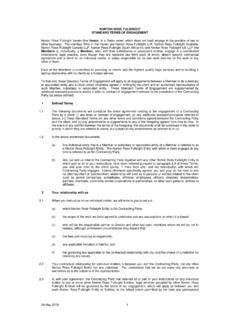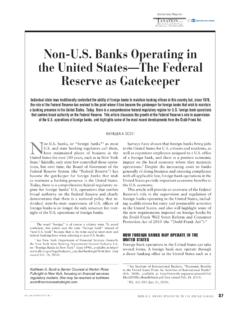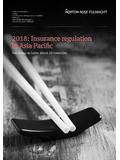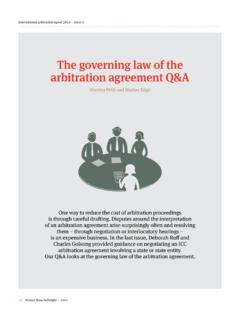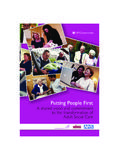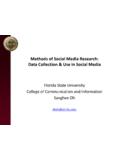Transcription of Employment and Labour - 2017 Year in Review
1 2017 Financial institutionsEnergyInfrastructure, mining and commoditiesTransportTechnology and innovationLife sciences and healthcareEmployment and Labour 2017 Year in Review Norton Rose FulbrightNorton Rose Fulbright is a global law fi rm. We provide the world s preeminent corporations and fi nancial institutions with a full business law service. We have more than 4000 lawyers and other legal staff based in more than 50 cities across Europe, the United States, Canada, Latin America, Asia, Australia, Africa, the Middle East and Central for our industry focus, we are strong across all the key industry sectors: fi nancial institutions; energy; infrastructure, mining and commodities; transport; technology and innovation ; and life sciences and healthcare. Through our global risk advisory group, we leverage our industry experience with our knowledge of legal, regulatory, compliance and governance issues to provide our clients with practical solutions to the legal and regulatory risks facing their we are, we operate in accordance with our global business principles of quality, unity and integrity.
2 We aim to provide the highest possible standard of legal service in each of our offi ces and to maintain that level of quality at every point of Rose Fulbright Verein, a Swiss verein, helps coordinate the activities of Norton Rose Fulbright members but does not itself provide legal services to clients. Norton Rose Fulbright has offi ces in more than 50 cities worldwide, including London, Houston, New York, Toronto, Mexico City, Hong Kong, Sydney and Johannesburg. For more information, see purpose of this communication is to provide information as to developments in the law. It does not contain a full analysis of the law nor does it constitute an opinion of any Norton Rose Fulbright entity on the points of law discussed. You must take specifi c legal advice on any particular matter which concerns you. If you require any advice or further information, please speak to your usual contact at Norton Rose Rose FulbrightNorton Rose Fulbright is a global law fi rm.
3 We provide the world s preeminent corporations and fi nancial institutions with a full business law service. We have more than 4000 lawyers and other legal staff based in more than 50 cities across Europe, the United States, Canada, Latin America, Asia, Australia, Africa, the Middle East and Central for our industry focus, we are strong across all the key industry sectors: fi nancial institutions; energy; infrastructure, mining and commodities; transport; technology and innovation ; and life sciences and healthcare. Through our global risk advisory group, we leverage our industry experience with our knowledge of legal, regulatory, compliance and governance issues to provide our clients with practical solutions to the legal and regulatory risks facing their we are, we operate in accordance with our global business principles of quality, unity and integrity. We aim to provide the highest possible standard of legal service in each of our offi ces and to maintain that level of quality at every point of Rose Fulbright Verein, a Swiss verein, helps coordinate the activities of Norton Rose Fulbright members but does not itself provide legal services to clients.
4 Norton Rose Fulbright has offi ces in more than 50 cities worldwide, including London, Houston, New York, Toronto, Mexico City, Hong Kong, Sydney and Johannesburg. For more information, see purpose of this communication is to provide information as to developments in the law. It does not contain a full analysis of the law nor does it constitute an opinion of any Norton Rose Fulbright entity on the points of law discussed. You must take specifi c legal advice on any particular matter which concerns you. If you require any advice or further information, please speak to your usual contact at Norton Rose Fulbright. Norton Rose Fulbright Canada LLP CAN1034 03/18 Extracts may be copied provided their source is acknowledged. Legislative updates 56 Indexes 63 Cases we re following 07 Executive summary 04 2017 Year in Review 20 January 21 May 34 September 46By geographical region 64By subject 68 February 23 June 39 October 48 March 28 July 42 November 51 April 31 August 44 December 552017 CONTENTS Executive Norton Rose Fulbright04 Norton Rose FulbrightOn behalf of my partners and our entire Employment and Labour (E&L) practice, I am pleased to present you with our Employment and Labour 2017 Year in Review .
5 This publication summarizes: 2017 Canadian common law and Quebec civil law cases 2018 cases we re following Cases and changes in legislation that include factual decisions from across CanadaThrough this Review , human resource managers, legal counsel and business leaders can stay up to date on the latest developments in Employment and Labour law. Our goal in sharing this report with you is to continue to provide you with in-depth knowledge in a rapidly evolving hope you enjoy this year s edition, and we would like to thank our colleagues Philippe B lisle and Karen McBean for their contribution to the preparation of this report. Sincerely,Michel Carle Senior Partner National Practice Group Leader Employment and LabourWho are we? Our E&L team consists of close to 100 lawyers and professionals and is proud to be ranked in the following categories: Chambers Canada, Nationwide: Employment and Labour (Band 1), Chambers and Partners, 2018 Chambers Global, Canada: Employment and Labour (Band 1), Chambers and Partners, 2018 Legal 500, Canada: Labour and Employment (Tier 1), The Legal 500, 2018 Want easy access to the cases most relevant to you?
6 Make sure to use the table of contents and easy-to-search indexes sorted by:1. Month2. Region3. Subject 2017 Financial institutionsEnergyInfrastructure, mining and commoditiesTransportTechnology and innovationLife sciences and healthcareEmployment and Labour 2017 Year in Review Norton Rose Fulbright 05We ve bookmarked these updates for you! 2017 was marked by several legislative reforms that could have an impact on the way your human resources and business operations are managed. See page 56 and following for new developments on: Employment standards reviews are taking place in many jurisdictions and are resulting in dramatic measures such as significant minimum wage increases, expanded maternity, paternity and parental leave regimes, etc. How will this affect you? Upcoming legalization of recreational cannabis: What will the impact be on employers across the country? When will it come into effect? Federal Bills C-44 and C-4: These two bills not only transferred a number of powers to the CIRB, but also amended the CLC to restore the procedures that existed prior to June 16, 2015, for the certification of bargaining agents and the revocation of their certification.
7 Need more information? If you would like to know more about the cases included in this publication, we would be happy to discuss them with you. Our key-contact details are provided at the end of this our website in order to: Subscribe to our E&L publications and Global Workplace Insider Blog Check out our apps! We ve developed practical tools to help you qualify workplace injuries and accurately determine the status of your workforce View our new interactive online Global Employment law guide (featuring 28 jurisdictions) to help you navigate the often disparate and diverse national Employment and Labour lawsEmployment law and standardsGrievance arbitrationHarassmentHuman rightsLabour lawsOccupational health and safetyPay equityPrivacyStatutesUnionsWorkers compensationWrongful dismissals Topics included in this edition: 06 Norton Rose Fulbright Preface Rose Fulbright 07 Cases we re following. On dismissal for breach of a drug and alcohol policy A matter that began with a 2012 Alberta human rights commission decision finally reached its conclusion in June 2017 with the Supreme Court of Canada decision in Stewart v Elk Valley Coal Corp.
8 , 2017 SCC 30. The case arose when an employee was terminated after testing positive for cocaine in post-incident testing. He was terminated for breach of the employer s drug and alcohol policy. The policy distinguished between employees who had voluntarily disclosed their addictions and those who were identified only after a breach of the policy. Harsher consequences were imposed on the latter under the policy. The employee, who worked in a safety-sensitive position in a safety-sensitive workplace, initially insisted he was merely a recreational drug user and had not revealed his drug use because he did not believe it affected his work. After his termination, he claimed a dependency and filed a complaint under Alberta s human rights human rights tribunal held that the employee was terminated for failing to comply with the policy requirements to stop using drugs and to disclose his drug use; he was not terminated as a result of his disability.
9 The tribunal also held that the employee had been accommodated to the point of undue hardship by the terms of the policy if a prima facie case of discrimination had been established. It dismissed the employee s appeal, an Alberta Queen s Bench judge upheld the finding that no discrimination had occurred, but disagreed that the employee s policy was a reasonable accommodation. He was of the view that an existing but unacknowledged dependency prevented the employee from accessing the policy s available further appeal, a majority of the Court of Appeal in Stewart v Elk Valley Coal Corporation, 2015 ABCA 225 agreed with the tribunals below that the employee had been dismissed for a breach of the employer s policy and not because of a disability. The court rejected the notion that an addicted employee in the position of the employee had no access to the accommodations offered by the policy while denying an addiction. It noted that both safety and human rights objectives would be undermined if such a subjective proposition was accepted.
10 It restored the tribunal s finding that the policy constituted accommodation to the point of undue hardship by providing disclosure and access to treatment without fear of discipline, reinstatement on reasonable conditions after six months and a contribution of 50% to the cost of the rehabilitation program upon majority of the Supreme Court of Canada held that the tribunal s finding that addiction was not a factor in the employee s termination was reasonable. It was supported by the evidence, and particularly the employer s termination letter. The majority noted it could not be assumed that addiction diminished the employee s ability to comply with the policy terms. Some addicted individuals might be fully capable of complying with workplace rules while others might not; in the latter case, a breach of the rule would be inextricably connected with the addiction. In each case, the question whether a protected characteristic was a factor in the adverse impact was dependent on the facts.

